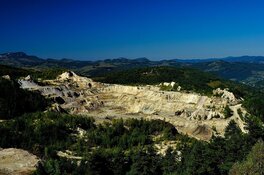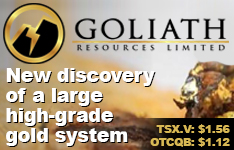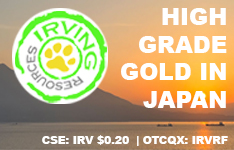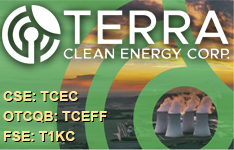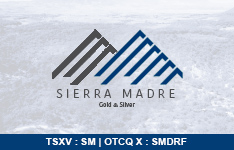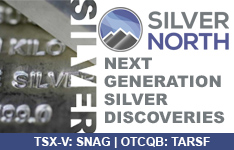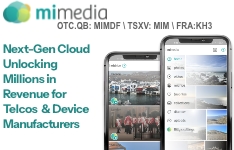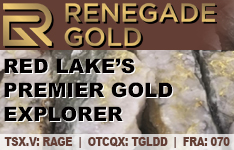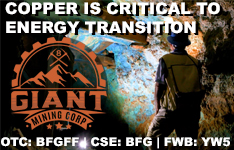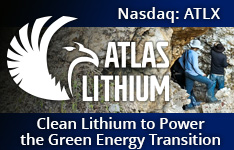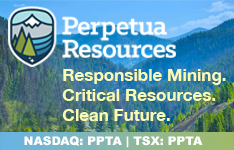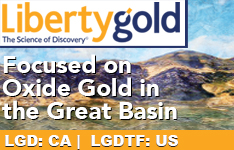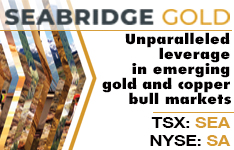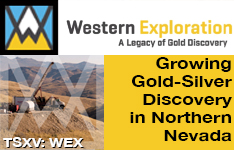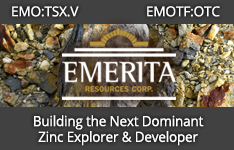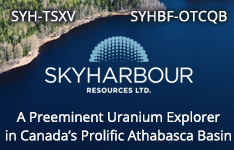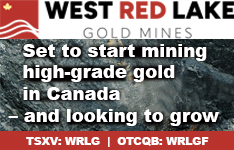Renegade Gold Inc. (RAGE; TSX: TGLDF; OTC: 070:FSE) has finalized the amendment and completion of purchase option agreements on its Satterly and Uchi gold projects, originally announced on April 5, 2022. In lieu of cash and additional share payments, the company has issued a total of 700,000 common shares to the optionors. For the Satterly property, Renegade issued 200,000 common shares in place of a US$28,000 cash payment. For the Uchi property, 500,000 shares were issued in exchange for a US$40,000 cash payment and a previously agreed-upon issuance of 20,000 shares.
With the transaction now closed, Renegade holds a 100 percent ownership interest in both properties. The Satterly project is now subject to a 1.5 percent net smelter returns (NSR) royalty, while the Uchi project is subject to a 2.0 percent NSR royalty, both in favor of the original optionors. All issued shares are subject to a statutory hold period expiring on October 14, 2025. A net smelter returns royalty is a common industry mechanism where a percentage of revenue generated from mineral production is paid to a royalty holder, calculated after refining and smelting costs.
These transactions consolidate Renegade’s control over key exploration assets in Ontario’s Red Lake District, an area with a long-established gold mining history and active industry investment. The region has gained renewed attention in recent years with significant acquisitions and developments by major companies, including Kinross’s CA$1.8 billion acquisition of the Great Bear Project.
Gold’s Enduring Role in a Volatile Financial Landscape
According to a June 12 article by Brian Hicks, the pursuit of gold remained deeply entrenched in both historical reverence and modern necessity, despite the extraordinary human and environmental toll. Hicks profiled Mponeng, the world’s deepest gold mine, highlighting its extreme conditions and massive resource intensity. He noted that despite generating only ten tons of gold annually, Mponeng consumed enough electricity to power 400,000 homes and required a workforce of 4,000 daily. “Gold is memory. Gold is trust. Gold is currency,” Hicks wrote, emphasizing that even in an era of digital transformation, gold’s legacy as a trusted asset continued to drive global demand.
On June 13, VBL reported that U.S. bullion banks generated US$500 million in revenue from precious metals trading in the first quarter of the year, citing data from Crisil Coalition Greenwich. The surge was driven by tariff-related arbitrage opportunities, which created pricing gaps between U.S. and international gold markets. Traders capitalized on COMEX premiums by importing physical metal to New York, mirroring similar arbitrage conditions seen during the 2020 pandemic. This market behavior underscored the ongoing relevance of physical gold delivery and price dislocations in times of uncertainty.
That same day, Stockhead observed that geopolitical tensions had an immediate impact on commodity markets, with gold briefly reaching US$3,410 per ounce following reports of Israeli strikes on Iran. The news caused a sharp pivot in risk sentiment, driving investors toward traditional safe havens. The publication described the price movement as a “pop,” reinforcing gold’s role as a defensive asset amid global instability.
Also on June 13, market commentator Chen Lin described his response to the geopolitical-driven gold rally, stating, “I sold out my future positions in gold and silver, taking nice profits.” He noted that while gold had jumped in reaction to the Middle East conflict, he viewed such spikes with caution due to the unpredictability of margin calls and market reactions during periods of heightened volatility.
Finally, on June 16, Matthew Piepenburg wrote that gold’s strength in 2025 reflected deep-rooted distrust in the global financial system. He argued that fiat currencies had lost credibility and purchasing power over time, stating, “Gold is unmasking the lie of deficits without tears, money printing without currency debasement and debt without destruction.” Piepenburg cited a European Central Bank warning that over 2,000 tons of gold demand in 2025 could trigger a financial crisis in the Eurozone, where derivative contracts allegedly far exceeded available physical gold. He described gold as “THE emerging global Tier-1 asset” as central banks and institutional investors reassessed its role in a leveraged, debt-heavy world economy.
Positioned for Expansion: What's Next for Renegade
According to the company’s investor presentation, Renegade Gold is advancing an aggressive exploration campaign across its large Red Lake land position, which totals 1,260 square kilometers. Its flagship Newman Todd project is currently undergoing a 25,000-meter drill program focused on testing high-grade mineralized zones along a 2.2-kilometer strike length. Recent drill results have returned grades such as 19.7 grams per tonne (g/t) gold over 9.0 meters and 89.9 g/t gold over 2.3 meters, underscoring the project’s near-surface potential.
Beyond Newman Todd, the company is progressing on several other fronts. Its Sidace project, a joint venture with Evolution Mining, contains three defined zones and more than 80,000 meters of historical drilling. The Red Lake portfolio also includes early-stage targets like the Claremont, Boyden, and Carricona zones, each showing surface or shallow drill intercepts with notable gold values. The company describes its Red Lake land package as the largest in the district and “strategically located” adjacent to operating mines and advanced-stage projects.
Renegade’s upcoming catalysts include additional drill results from Newman Todd, follow-up campaigns at regional targets identified during recent reconnaissance work, and potential future exploration at the Uchi and Satterly properties now fully under company control. With a current market capitalization of US$8.0 million and 53.2 million shares outstanding as of February 25, 2025, Renegade maintains a relatively tight capital structure as it advances its multi-asset portfolio in a competitive gold district.
 Streetwise Ownership Overview*
Streetwise Ownership Overview*
Renegade Gold Inc. (RAGE; TSX: TGLDF; OTC: 070:FSE)
Ownership and Share Structure
According to Refinitiv, 18.86% of Renegade Gold is held by management and insiders. Of them, James Russell Nelles Starr holds 12.80%, R Dale Ginn owns 2.91%, and Navjit Dhaliwal owns 2.89%.
Insitutions hold 1.25%. That insitution is U.S. Global Investors. The rest is retail.
Renegade Gold has 51.92 million outstanding shares, 42.13 million free float shares, and a market capitalization of CA$4.59 million. Renegade's 52 week range is CA$0.08 - CA$0.31.
| Want to be the first to know about interesting Gold investment ideas? Sign up to receive the FREE Streetwise Reports' newsletter. | Subscribe |
Important Disclosures:
- [COMPANY] is a billboard sponsor of Streetwise Reports and pays SWR a monthly sponsorship fee between US$4,000 and US$5,000. In addition, [COMPANY] has a consulting relationship with Street Smart an affiliate of Streetwise Reports. Street Smart Clients pay a monthly consulting fee between US$8,000 and US$20,000.
- As of the date of this article, officers and/or employees of Streetwise Reports LLC (including members of their household) own securities of [COMPANY].
- [PERSON_NAME]wrote this article for Streetwise Reports LLC and provides services to Streetwise Reports as an employee. They or members of their household own securities of: [COMPANY]. They or members of their household are paid by: [COMPANY]
- This article does not constitute investment advice and is not a solicitation for any investment. Streetwise Reports does not render general or specific investment advice and the information on Streetwise Reports should not be considered a recommendation to buy or sell any security. Each reader is encouraged to consult with his or her personal financial adviser and perform their own comprehensive investment research. By opening this page, each reader accepts and agrees to Streetwise Reports' terms of use and full legal disclaimer. Streetwise Reports does not endorse or recommend the business, products, services or securities of any company.
- This article does not constitute medical advice. Officers, employees and contributors to Streetwise Reports are not licensed medical professionals. Readers should always contact their healthcare professionals for medical advice.
For additional disclosures, please click here.



